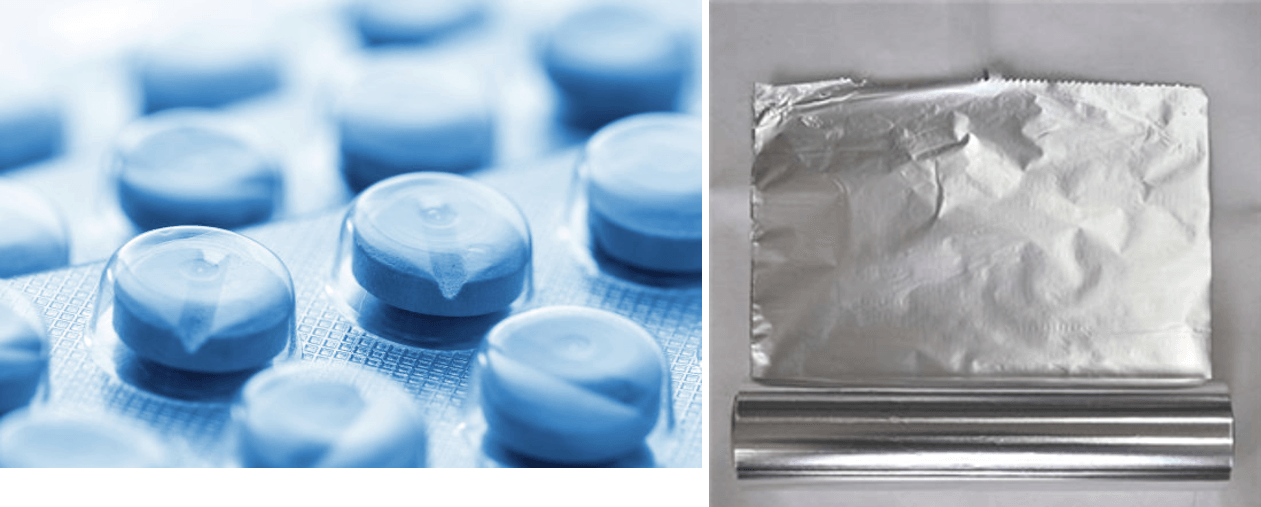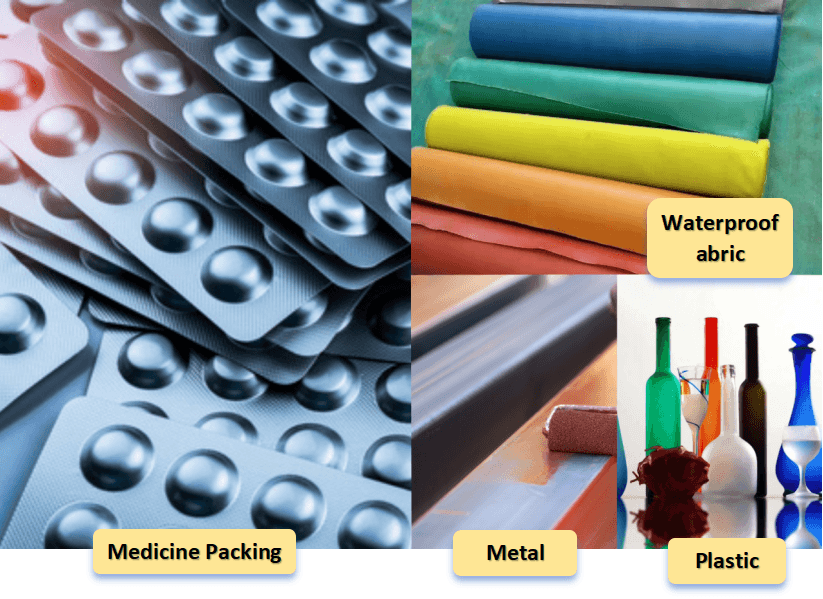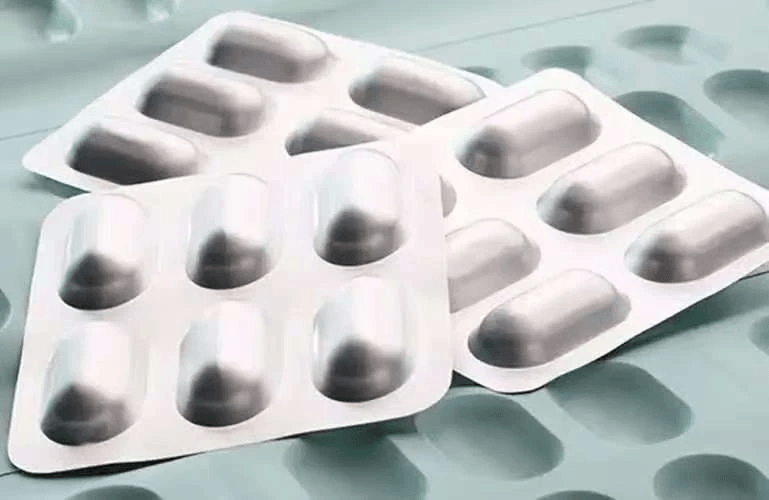Introduction

Blister packaging has become an essential component in the world of product protection and presentation, serving various industries from pharmaceuticals to consumer goods. At the heart of this innovative packaging method is heat seal blister packaging, a technique that ensures products remain secure and intact until they reach the end user. Understanding the intricacies of blister packaging, particularly the importance of heat sealing, can help businesses make informed decisions about their packaging solutions.
Understanding Blister Packaging Basics
Blister packaging typically consists of a pre-formed plastic cavity that houses a product, sealed with a backing material such as paper or aluminum. This combination creates a protective barrier against moisture, light, and tampering, making it ideal for items like medications and electronics. The versatility of blister packs allows for customization in size and shape, catering to various consumer needs while enhancing shelf appeal.
Importance of Heat Sealing
Heat sealing is crucial in the blister packaging process as it provides a reliable bond between the plastic cavity and its backing material. By applying heat and pressure during sealing, manufacturers ensure that products are not only protected but also easily accessible to consumers when needed. This method minimizes contamination risks while maximizing durability—key factors in industries like pharmacy blister packaging where safety is paramount.
Applications in Various Industries
The applications of heat seal blister packaging extend far beyond just pharmaceuticals; they are widely used in food products, electronics, cosmetics, and more. Each industry benefits from this type of packaging due to its ability to preserve product integrity while offering an attractive display for consumers. As businesses continue to seek efficient and effective ways to package their goods, heat seal blister technology remains at the forefront as a go-to solution.
The Science Behind Heat Sealing

Heat sealing is more than just a method; it's a fascinating interplay of temperature, pressure, and materials that creates the perfect bond for blister packaging. Understanding the science behind heat seal blister packaging is crucial for those in various industries, especially pharmaceuticals, where product integrity is paramount. Let’s dive into how heat activates materials and why this process is so vital.
How Heat Activates the Materials
When it comes to heat seal blister packaging, temperature plays a starring role in activating the materials involved. As heat is applied, it causes specific polymers used in blister packs to soften and become pliable. This transformation allows them to fuse together seamlessly, creating an airtight seal that protects products from moisture and contamination—essential for pharmacy blister packaging where preserving medication efficacy is critical.
The right amount of heat can make or break the sealing process; too little won't create a strong bond, while too much can damage the materials. Typically, manufacturers employ precise temperature control systems to ensure optimal conditions for every batch of blister packaging produced. This meticulous attention to detail ensures that each package meets quality standards while safeguarding its contents.
The Role of Pressure in the Process
While heat activates materials, pressure plays an equally important role in achieving effective seals in heat seal blister packaging. Applying pressure during the sealing process helps to eliminate air pockets between layers of material, ensuring a tighter bond as they fuse together. This compression not only enhances the strength of the seal but also contributes to improved barrier properties against external elements.
In pharmacy blister packaging specifically, maintaining consistent pressure throughout production is essential for ensuring that each package provides adequate protection against environmental factors like humidity and light exposure. Manufacturers often use specialized equipment designed to apply uniform pressure across all areas of the package during sealing. This results in high-quality seals that are both durable and reliable.
Benefits of Heat Seal Blister Packaging
The advantages of utilizing heat seal technology in blister packaging are numerous and impactful across various sectors. First off, products sealed using this method enjoy enhanced protection from external contaminants like dust and moisture—crucial for pharmaceuticals where product integrity directly affects patient safety. Additionally, heat seal blister packaging extends shelf life by creating airtight environments that slow down degradation processes.
Cost-effectiveness also stands out as a significant benefit; manufacturers can produce large quantities with minimal waste when using efficient heating methods combined with robust material choices tailored for their specific needs. Furthermore, advancements in technology continue to improve both speed and efficiency within production lines while maintaining high standards of quality control—a win-win situation!
In summary, understanding how heat activates materials alongside the importance of pressure reveals why heat seal blister packaging remains a preferred choice across industries today.
Materials Used in Blister Packs

When it comes to heat seal blister packaging, the choice of materials is crucial. The right materials not only enhance the protective qualities of blister packaging but also ensure that products remain safe and secure until they reach the consumer. In this section, we’ll explore common materials used in blister packs, eco-friendly alternatives, and how to choose the best material for your specific needs.
Common Materials for Blister Packaging
Blister packaging typically utilizes a variety of materials designed to meet different product requirements and industry standards. PVC (polyvinyl chloride) is one of the most common choices due to its excellent clarity and formability, making it ideal for showcasing products while ensuring durability. Other popular options include PET (polyethylene terephthalate), which offers superior strength and is often used in pharmacy blister packaging for medicines that require extra protection from moisture and light.
Additionally, aluminum foil is frequently employed as a backing material due to its barrier properties against oxygen, moisture, and light—factors that can compromise product integrity over time. When combined with heat seal technology, these materials create an effective seal that maintains freshness and safety throughout the product's shelf life. Ultimately, selecting the right combination of materials ensures optimal performance in heat seal blister packaging applications.
Eco-Friendly Alternatives: Chemix's Water-Based Resin Solution
As sustainability becomes increasingly important across industries, Chemix has stepped up with innovative eco-friendly alternatives like their water-based resin solution for blister packaging. This alternative not only reduces reliance on traditional plastics but also minimizes environmental impact without compromising on performance or safety standards essential for heat seal blister packaging applications. By using water-based resins, manufacturers can produce biodegradable options that still provide adequate protection for various products.
These eco-friendly solutions are particularly appealing in sectors such as pharmacy blister packaging where compliance with stringent regulations is necessary while also addressing consumer demand for sustainable practices. As more companies adopt these innovative materials, they help pave the way toward greener manufacturing processes while maintaining high-quality standards in their heat seal processes. Embracing such alternatives could significantly reduce waste while enhancing brand reputation among environmentally conscious consumers.
Choosing the Right Material for Your Needs
Selecting the appropriate material for your heat seal blister packaging requires careful consideration of several factors including product type, shelf life requirements, and environmental impact preferences. Start by assessing what level of protection your product needs; some items may require more robust barriers against moisture or UV light than others can tolerate easily without added layers of protection.
Additionally, consider regulatory requirements specific to your industry—especially critical when dealing with pharmaceutical products where compliance with health regulations is paramount in pharmacy blister packaging solutions. Finally, don't overlook consumer trends; opting for eco-friendly materials can enhance brand loyalty among customers who prioritize sustainability alongside quality when choosing products packaged using heat seal technology.
The Heat Sealing Process Explained

When it comes to heat seal blister packaging, understanding the process is essential for achieving optimal results. Heat sealing is a method that involves applying heat and pressure to bond two materials together, creating a secure and tamper-evident package. This section will walk you through the steps involved in heat sealing, the necessary equipment, and quality control measures to ensure your blister packaging meets industry standards.
Steps Involved in Heat Sealing
The heat sealing process begins with preparing the materials—typically a rigid plastic blister and a backing card made of paperboard or foil. Once the materials are aligned correctly, they are fed into a heat seal machine where controlled temperature and pressure come into play. As the machine activates, heat penetrates the materials, causing them to soften and bond together once pressure is applied; this creates a durable seal that protects products inside.
After sealing, it's crucial to cool down the bonded area before removing it from the machine; this ensures that the integrity of the seal remains intact. The entire process can be automated for efficiency but also allows for manual adjustments when needed—perfect for those unique pharmacy blister packaging requirements. Ultimately, mastering these steps leads to effective heat seal blister packaging that enhances product safety and presentation.
Equipment Required for Effective Sealing
To achieve successful heat seal blister packaging, specific equipment is indispensable in any manufacturing setup. A reliable heat sealing machine is at the heart of this operation; it should have adjustable temperature controls and pressure settings tailored to different materials used in blister packaging. Additionally, conveyor belts may be incorporated for seamless production flow while ensuring consistent quality throughout each batch.
Other essential tools include cutting machines for trimming excess material after sealing and inspection systems that monitor seals' integrity in real-time. Investing in high-quality equipment not only improves efficiency but also minimizes waste—a win-win scenario! With proper machinery at hand, businesses can produce their pharmacy blister packaging with confidence while meeting regulatory standards.
Quality Control Measures in Heat Seal Blister Packaging
Quality control is paramount when dealing with heat seal blister packaging; after all, no one wants their products compromised due to faulty seals! To ensure high-quality output consistently, manufacturers should implement several key measures throughout their production processes. Regular calibration of machines helps maintain precise temperature and pressure settings crucial for effective sealing.
Moreover, visual inspections play an integral role in identifying defects such as incomplete seals or misaligned components before products leave the facility—nobody wants an embarrassing return! Testing samples from each batch can further validate adhesion strength and durability under various conditions—this proactive approach guarantees your pharmacy blister packaging meets customer expectations every time.
Advantages of Heat Seal Technology

Heat seal blister packaging is gaining traction across various industries, and for good reason. This innovative approach to packaging offers numerous advantages that enhance product safety, extend shelf life, and provide cost-effective manufacturing solutions. Let’s dive into the specifics of these benefits.
Enhanced Product Protection
One of the standout features of heat seal blister packaging is its ability to provide enhanced product protection. The airtight seals formed during the heat sealing process create a barrier against moisture, oxygen, and contaminants, ensuring that products remain intact and unspoiled. This is particularly crucial in industries like pharmaceuticals, where pharmacy blister packaging must safeguard sensitive medications from environmental factors that could compromise their efficacy.
Extended Shelf Life Benefits
Heat seal technology significantly contributes to extending the shelf life of packaged goods. By minimizing exposure to air and moisture through effective sealing techniques, products can maintain their quality for longer periods. This is especially important in sectors such as food and pharmaceuticals; with heat seal blister packaging, manufacturers can confidently deliver items that retain their freshness without the need for artificial preservatives.
Cost-Effectiveness in Manufacturing
In addition to protecting products and prolonging their viability, heat seal blister packaging offers considerable cost-effectiveness in manufacturing processes. The efficiency of automated heat sealing equipment reduces labor costs while increasing production speed—an appealing combination for businesses looking to optimize operations without sacrificing quality. Moreover, the durability of the materials used means fewer returns due to damaged goods, ultimately leading to increased profitability.
Challenges and Considerations

While heat seal blister packaging has revolutionized how products are presented and protected, it’s not without its challenges. Companies venturing into the world of blister packaging must navigate a variety of potential issues that can arise during the heat sealing process. Understanding these challenges is crucial for ensuring that products remain safe, effective, and appealing to consumers.
Potential Issues in the Heat Sealing Process
One common issue faced in heat seal blister packaging is inadequate sealing due to improper temperature or pressure settings. If the heat seal isn’t done correctly, it can lead to compromised integrity of the package, allowing contaminants to enter and potentially damaging the product inside. Additionally, variations in material properties can affect how well different types of blister packaging respond to heat and pressure, making consistency a key concern.
Another potential pitfall is contamination from dust or moisture on sealing surfaces, which can prevent proper adhesion during the sealing process. This not only affects the aesthetic quality of the package but also its functionality—leading to product spoilage or damage over time. Manufacturers need to be vigilant about maintaining clean environments and regularly inspecting equipment involved in heat seal processes.
Lastly, changes in production speed can impact the effectiveness of heat seal blister packaging as well; too fast may lead to insufficient seals while too slow could increase operational costs unnecessarily. Balancing efficiency with quality control measures is paramount for any organization looking to optimize their blister packaging solutions.
Troubleshooting Common Problems
When issues arise during the heat sealing process, having a troubleshooting guide can be invaluable for manufacturers using blister packaging systems. One frequent problem is incomplete seals; if this happens, operators should first check temperature settings and ensure they align with material specifications for optimal adhesion. Adjusting pressure levels might also be necessary since inadequate force can prevent proper bonding between materials.
Another common challenge involves wrinkles or bubbles forming in the sealed area—this often indicates air entrapment during sealing or improper alignment before application of heat and pressure. To address this issue effectively, workers should ensure that materials are properly aligned before initiating any sealing process while also checking for consistent heating across all areas involved in creating seals.
If defects persist despite adjustments, it may be wise to perform routine maintenance on equipment used for heat seal blister packaging. Regularly scheduled checks not only prolong equipment life but also enhance overall performance by addressing wear-and-tear issues before they escalate into major problems affecting production output.
Innovations in Pharmacy Blister Packaging
The pharmacy sector has seen remarkable innovations aimed at enhancing safety and usability through advanced heat seal blister packaging technologies. Smart features such as tamper-evident seals have become increasingly popular; these not only provide an added layer of security but also help consumers easily identify if a product has been compromised prior to purchase. Incorporating QR codes into pharmacy blister packs allows patients immediate access to important medication information via smartphones—a game changer for patient education!
Additionally, some manufacturers are now utilizing biodegradable materials within their pharmacy blister packaging solutions which address growing environmental concerns surrounding plastic waste generated by traditional options. By combining eco-friendliness with effective product protection through innovative designs like child-resistant features integrated into blisters themselves—companies are setting new standards within pharmaceutical safety protocols while appealing more broadly toward sustainability initiatives.
Lastly, advancements such as automated dispensing systems linked directly with smart pill organizers utilize technology-driven approaches that streamline medication management processes effectively reducing human error associated with manual handling tasks typically involved when dealing with traditional packages alone! Such innovations signify a promising future ahead where both convenience meets cutting-edge functionality seamlessly within today’s modern healthcare landscape.
Conclusion
In wrapping up our exploration of heat seal blister packaging, it’s clear that this innovative method is not only vital for product protection but also plays a significant role in various industries. As we look ahead, the future of blister packaging seems bright, with advancements in technology and materials paving the way for enhanced efficiency and sustainability. The evolution of heat seal techniques promises to meet the growing demands for safety and convenience in product delivery.
Future of Heat Seal Blister Packaging
The future of heat seal blister packaging is poised to be transformative, driven by technological innovations and consumer expectations. With the rise of automation and smart manufacturing processes, companies can expect faster production times without compromising quality. Additionally, advancements in materials science will likely lead to more versatile options that cater to specific industry needs, particularly within pharmacy blister packaging where safety is paramount.
Sustainability in Blister Packaging Solutions
Sustainability is becoming increasingly important in the realm of blister packaging solutions, with many companies seeking eco-friendly alternatives without sacrificing performance. Chemix's water-based resin solution exemplifies this shift towards greener practices, allowing businesses to reduce their environmental footprint while utilizing effective heat seal methods. By prioritizing sustainable materials and processes, the industry can contribute positively to global efforts aimed at reducing waste and promoting responsible consumption.
Final Thoughts on Blister Packaging Innovations
As we reflect on the innovations within heat seal blister packaging, it’s evident that this method will continue evolving to meet both consumer demands and regulatory standards. The combination of enhanced protection features and sustainable practices positions blister packaging as a frontrunner across various sectors—including pharmaceuticals—where reliability is crucial. Embracing these advancements will not only benefit manufacturers but also ensure safer products reach consumers effectively.
